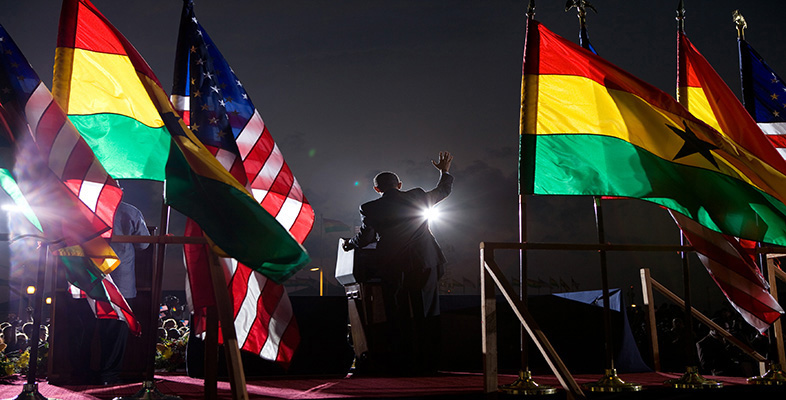3 Speeches and speech-making
To round off this initial exploration of our key terms, we will look at an aspect of language use where voices and texts converge. The ancient art of rhetoric, in which a speaker employs eloquent devices to achieve persuasive effects, was an important element of a university education in the Middle Ages, and it is still very much alive today in the public sphere. Speeches by figures such as politicians are usually carefully crafted affairs, designed to be spoken, but relying on a written script. Analysing the construction of a speech, and its manner of delivery, can give interesting insights into the techniques of rhetoric, but what matters most of all in any situation where a speech is being made is the audience. The audience, and therefore the context for and the purpose in speaking, will shape not only what is said, but how it is said.
The idea of ‘audience’ is, of course, crucial in any form of communication, and as you work through this course you will frequently be thinking about the audiences (or readers) for written texts. But for the purposes of the next activity we will move away from the printed page so that we can listen to some examples of famous speeches, and begin to analyse their effects.
Listen to the following audio, ‘Speeches and speech-making’, and then answer the questions below.
Transcript: Speeches and speech-making
Question 1
a.
a) the art of the possible.
b.
b) the art of persuading and pleasing people.
c.
c) the art of prediction.
The correct answer is b.
Answer
a) It is usually politics, not rhetoric, that is described as ‘the art of the possible’, a saying attributed to a nineteenth-century German statesman, Bismarck.
b) The art of persuading and pleasing people is the definition used in the audio piece.
c) Since rhetoric is designed to persuade people, it is sometimes concerned with future actions, but prediction is not necessarily associated with rhetoric.
Question 2
a.
a) Making an emotional connection between speaker and audience is a good strategy.
b.
b) Rhetoric only works if the speaker and audience are already in agreement.
c.
c) A degree of ambiguity in a speaker’s words can be effective because it allows the audience to make their own interpretations.
The correct answers are a and c.
Answer
a) This claim is made in the audio piece with reference to Earl Spencer’s eulogy (12:49 – 14:40, from ‘Making an emotional connection ...’ to ‘on both counts he succeeded’).
b) This is not a claim being made here. While it can be helpful for a speaker to have ‘supporters’ in the audience, one of the purposes of rhetoric is to persuade people or make them change their minds, so it is not necessary for speaker and audience to be in agreement from the outset.
c) This claim is made in the audio piece with reference to the extract from Tony Blair’s speech (11:32 – 12:00, from ‘One example of this ...’ to ‘and yet that shows empathy’).
Question 3
Read the following extract from the speech made by Barack Obama in Grant Park, Illinois, on 4 November 2008, after winning the American presidential election. Then identify examples of the following rhetorical techniques:
- a) the rule of three
- b) imagery
- c) contrast.
Use the box beneath the extract to record your thoughts.
Extract from Barack Obama’s speech at Grant Park on 4 November 2008
If there is anyone out there who still doubts that America is a place where all things are possible; who still wonders if the dream of our founders is alive in our time; who still questions the power of our democracy, tonight is your answer.
…
It’s the answer spoken by young and old, rich and poor, Democrat and Republican, black, white, Latino, Asian, Native American, gay, straight, disabled and not disabled – Americans who sent a message to the world that we have never been a collection of Red States and Blue States: we are, and always will be, the United States of America.
It’s the answer that led those who have been told for so long by so many to be cynical, and fearful, and doubtful of what we can achieve to put their hands on the arc of history and bend it once more toward the hope of a better day.
It’s been a long time coming, but tonight, because of what we did on this day, in this election, at this defining moment, change has come to America.
Answer
a) The first paragraph of this extract uses three balanced clauses beginning with ‘who still’ (doubts/wonders/questions).
b) There is a good example of imagery in the third paragraph of the extract, where Obama uses the metaphor of history as an arc that can be bent.
c) The second paragraph of the extract contains plentiful examples of contrast: ‘young and old’; ‘rich and poor’; ‘Democrat and Republican’; etc.
